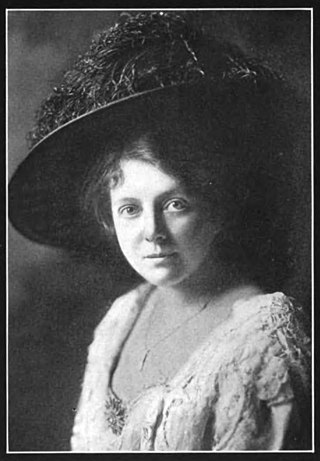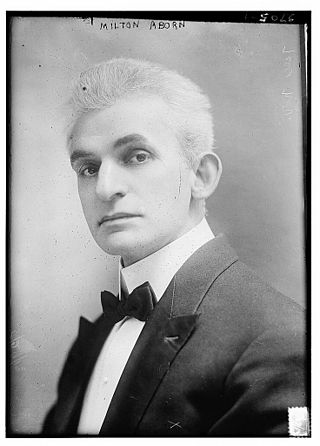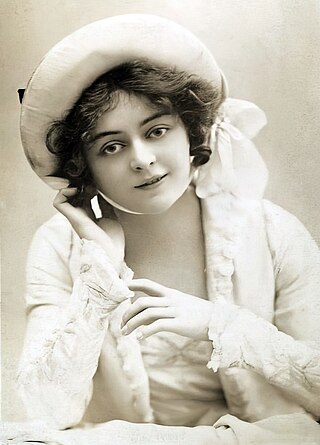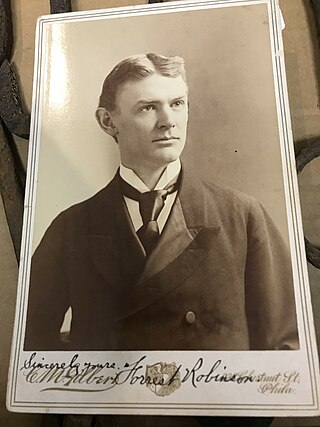Related Research Articles

Félix Marie Henri Tilkin, better known by his pen name Ivan Caryll, was a Belgian-born composer of operettas and Edwardian musical comedies in the English language, who made his career in London and later New York. He composed some forty musical comedies and operettas.

Maude Fealy was an American stage and silent film actress whose career survived into the sound era.

George Joseph Edwardes was an English theatre manager and producer of Irish ancestry who brought a new era in musical theatre to the British stage and beyond.

Mary Elizabeth "Molly" Pearson was a Scottish stage actress of the early 20th century. She was born in Edinburgh to parents Mandell Pearson (1844-1880) and Amelia "Emily" Rosalie Hilliard (1846-1928).

Gertrude Bryan was an American stage actress who appeared on Broadway in the early 20th century.

Hazel Dawn was an American stage, film and television actress, and violinist. She was born to a Mormon family in Utah, and studied music in Europe where her father was a missionary. Dawn rose to fame as the title character in Ivan Caryll's The Pink Lady, which opened in 1911 on Broadway and ran for over 300 performances; it earned Dawn the eponymous nickname. She performed extensively on Broadway and began work in film in 1914, appearing in a total of 13 feature films. Dawn died at age 98 in New York City.

Beatrice Prentice was a stage actress of the early 20th century.

Paulina Clarissa Molony, known professionally as Saharet, was an Australian dancer who performed in vaudeville music houses as well as in Broadway productions in the United States as well as in Europe, earning considerable fame and notoriety.

Blanche Lillian Deyo was an American dancer, actress, and singer who performed in multiple theatrical venues -- Broadway, vaudeville, burlesque, ballet, and international variety theaters—throughout the late nineteenth and early twentieth centuries.

Marguerite Sylva was a Belgian born mezzo-soprano who achieved fame in opera, operetta, and musical theatre. She was particularly known for her performances in the title role of Bizet's Carmen, which she sang over 300 times in the course of her career. Sylva was a pioneering recording artist for Edison Records and made many recordings for the company from 1910 to 1912.

The Aborn Opera Company, also known as the Aborn English Opera Company, was an American opera company that was active from 1895 through 1922.

Lydia Yakolevna Lipkowska was a Russian operatic soprano of Ukrainian origin who had an active international career during the first half of the 20th century. A gifted lyric coloratura soprano, she performed leading roles at the Mariinsky Theatre, the Metropolitan Opera, the Royal Opera House, La Scala, and the Opéra-Comique among other theaters.

Alice Dovey was an American motion picture comedian and actress who first appeared in The Commanding Officer (1915). This was a Famous Players Lasky movie which was directed by Alan Dwan. The title role in the film was played by Donald Crisp, with Dovey playing the role of his wife.

Carlotta Nillson was a Swedish-born American actress who appeared in at least ten Broadway productions over the first decade of the twentieth century. She was probably best remembered for her portrayal of Rhys Macchesney in the play The Three of Us.

The Bronx Opera House is a former theater, part of the Subway Circuit, now converted into a boutique hotel in the Melrose neighborhood of the Bronx, New York City. It was designed by George M. Keister and built in 1913 at 436 East 149th Street on the site of Frederick Schnaufer's stable. It was one of several theaters to come into the area that became known as the Hub. It was formally dedicated on opening night Saturday, August 30, 1913.

Fine Feathers is a 1912 drama in four acts by Eugene Walter.

Adrienne Adele Augarde was an English actress and singer popular for nearly a decade on both sides of the Atlantic Ocean, primarily for her roles in Edwardian musical comedy.

Forrest Robinson was an American stage and silent era actor. He was a leading man at the Boston Museum Theater and acted in numerous theatrical productions in New York. He has also appeared in numerous films.

Ione Bright was an American theatre actress active in Broadway and other theatre from 1908 to the early 1950s.

Greta Risley was a mezzo soprano singer in the United States in the late nineteenth and early twentieth century.
References
- 1 2 3 Blue Envelope Opens, The New York Times, March 14, 1916, pg. 9.
- 1 2 3 Theaters, Atlanta Constitution, January 20, 1906, pg. 8.
- 1 2 F.G. Ross, Manager Of Lillian Russell, The New York Times, August 19, 1942, p. 19.
- ↑ Actor, Manager, and Play, The New York Times, August 2, 1885, pg. 3.
- ↑ IBDB: The official source for Broadway Information
- 1 2 Article 16--No Title, The New York Times, March 21, 1909, pg 8.
- ↑ Display Ad 32--No Title, The New York Times, March 21, 1909, pg. X1.
- ↑ Fun By The Newlyweds, The New York Times, March 23, 1909, pg. 9.
- ↑ Theatrical Notes, The New York Times, September 17, 1909, pg. 9.
- ↑ Article 10-No Title, The New York Times, October 31, 1909, pg. SM14.
- ↑ Aborn Opera Company Gives King Dodo, July 12, 1910, pg. 7.
- ↑ Plays And Players, The New York Times, June 18, 1911, pg. X1.
- ↑ First Signs Of Theatrical Activity, The New York Times, July 30, 1911, pg. X8.
- 1 2 Theatrical Notes, The New York Times, December 28, 1911, pg. 7.
- ↑ The Cast for Jacinta, The New York Times, November 20, 1911, pg. 11.
- 1 2 Week's Bills At Theatres, The New York Times, March 19, 1912, pg. 8.
- ↑ [ permanent dead link ]
- ↑ The Blue Envelope on March 13, The New York Times, March 4, 1916, pg. 9.
- ↑ Public Notices, The New York Times, September 21, 1924, pg. 3.